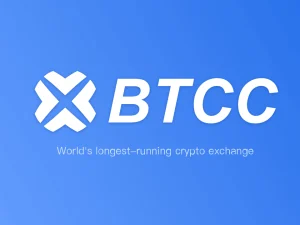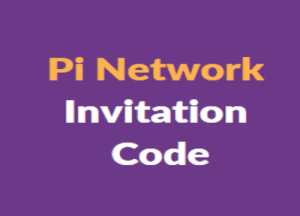What is Web3? The Guide to Newbies
According to cryptocurrency supporters, Web3 can take power and control away from large technology companies.
Who knew there would be a sequel on the Internet? If you’ve read articles about cryptocurrencies, NFTs and Metaverse, you’ll inevitably encounter the vague term “Web3”. As a term coined by the co founders of Ethereum, Web3 is called the next stage of the Internet by cryptocurrency lovers.
Two Ways to Define Web3
There are two ways to define Web3. A quick and simple description is a blockchain integrated Internet, or an Internet where cryptocurrencies and NFTs are built into the platform you use. A more complex but more specific way to think about Web3 is a user owned Internet. This is the dream of cryptocurrency promoters. They say that the integration of blockchain technology will lead to an equal Internet.
Here’s the argument. At present, the Internet is owned by only a few companies – facebook, Amazon and Google are the leaders – which has led to electronic feudalism. In this case, Internet users work on the property owned by a few giant companies. The solution is Web3, which uses decentralized technology to cut off intermediaries.
“Take the way we pay for things online,” Ethereum co-founder Gavin Wood said in a blog post in 2018. “You’re not authorized to pay yourself. In reality, you have to contact your financial institution to do it on your behalf. You’re not trusted to do something as harmless as paying for water. You’re treated like a child asking his parents for help.”
Compared with Web3 payment through cryptocurrency, money can be sent from one wallet to another by using open source protocols rather than financial institutions.Some go further and envision an Internet where platforms are decentralized through ownership decentralization among users. Take Facebook as an example.
A hypothetical web 3 version of the social network will not make an IPO. Instead, it will create a cryptocurrency token and air drop it to early adopters. People will be rewarded for viral transmission. Perhaps tokens will be obtained based on participation. These tokens can even be used as governance tokens to vote on content reviews or other policy decisions.
Since the value of these tokens will depend on the success of the platform, everyone who holds these tokens will have the motivation to make Facebook as pleasant as possible.
When proponents of Web3 talk about “decentralization” – a word vague enough to brighten your eyes – this is basically what they mean: spreading this power among users through the Internet controlled by a few companies. However, critics say this is a fantasy and technically impossible to achieve.
What are Web1 and Web2?
If there is Web3, there must be web1 and web2. Fortunately, these definitions are easier for you to understand.
Web1 is the first iteration of the Internet. It is the Internet in the 1990s and early 21st century, sometimes called “reading” Internet. It refers to static web pages where people can see and (slowly) download information, but rarely do anything else. At that time, the Internet was trying to replicate the existing media: computerized magazines, newspapers and newsletters. Most importantly, the protocol it runs is open source.
Web2 is the “read / write” Internet launched around 2004. “Read / write” means that people can choose to upload and download information. Think about posting posts and photos on Facebook and posting videos on YouTube. In short, web2 is the era of social media. The Internet has evolved from the computerized form of existing media to its own. But it also makes way for the rise of platforms that increasingly dominate the Internet.
“We are now at the beginning of the Web3 era, which combines the decentralization of web1, the spirit of community governance and the advanced and modern functions of web2,” Chris Dixon, a partner of Andreessen Horowitz, a famous venture capital company in Silicon Valley, wrote in the fall of 2021.
Is Web3 Related to Metaverse?
yes. Just as Facebook, youtube and other platforms are the products of technological progress in data upload and cloud storage, many people believe that Metaverse will be the representative of blockchain technology. Facebook turned itself into meta in October, marking its transition from a web2 company to a company with a major focus on Web3.
At the same time, metavers like decentraland and sandbox embody the spirit of Web3. These are virtual worlds composed of a fixed number of virtual lands, which cannot be increased or decreased. People can buy these lands and do what they want: create games, shops and fashion areas, sell advertisements or just build houses. For example, Snoop Dogg has a mansion in sandbox, where he holds parties and concerts.
People are already paying huge fees for Metaverse land, ranging from thousands of dollars to millions of dollars. Our idea is that everything in these meta spaces is owned by users. For example, when you create a project in a sandbox, you have its NFT and can sell it in cryptocurrency. You can run the game and provide services to others in the space – for a fee. Most importantly, you can decide how to deal with the space you have.
Compared with centralized meta space, such as second life or fortress night, the creator can fully control the appearance of the virtual world and who can live in it. The position of meta on the scale of centralization is a topic of speculation and heated debate.
Are There Any Disadvantages?
The answer to this question depends on who you ask. Many people say that token participation on platforms such as Facebook and twitter can create harmful incentives for participation regardless of cost. Others, such as Elon Musk, question the existence of Web3. The founder of Tesla and SpaceX called it “more marketing terminology than reality”.
In addition to philosophical differences, there is also uncertainty about whether the real Web3 can really be implemented technically. Critics believe that what supporters often describe as Web3 Utopia needs is the type of centralization attacked.
Ethereum, most of the foundation of this blockchain, is notoriously inefficient. High transaction cost and high energy consumption. People are studying solutions, including applications based on Ethereum to make it more efficient, and adopt carbon neutral blockchains such as Solana, but for some people, the idea of universal blockchain activities is technically impossible.
“Programmer Stephen Diehl said in December:” on the basis of computing, blockchain networks will not expand unless they become what they call chaebols and centralized systems designed to replace. “The maintenance cost of blockchain solutions is much higher than that of centralized solutions. Centralization always wins purely from its ability to provide physical data to customers through the network.”
Others worry about how far Web3 can be economically decentralized. Large venture capital companies have made huge investments in Web3 Technology: last year’s investment was slightly less than $18 billion. Like Twitter co-founder Jack Dorsey, these powerful companies will own the industry.
“This is ultimately a centralized entity with different labels,” Dorsey said on twitter in December. “Know what you’re doing.”










